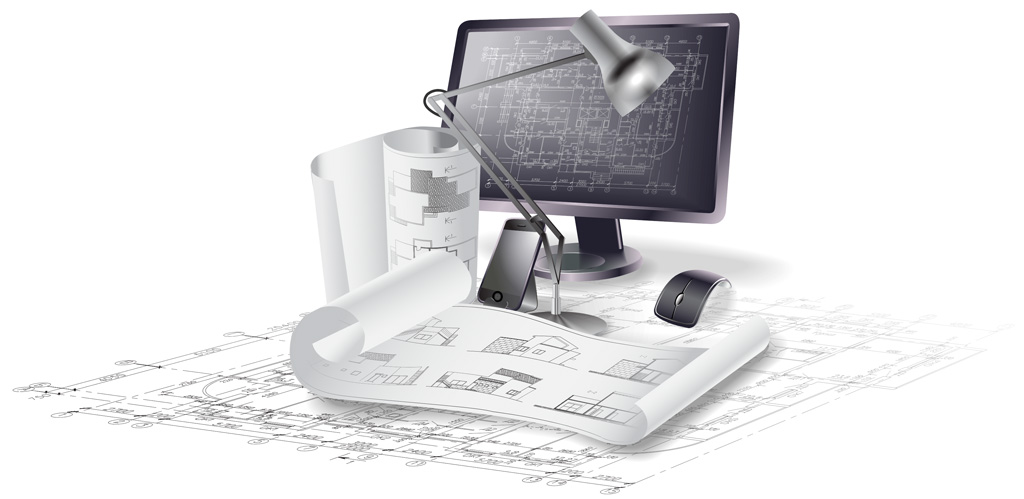From 2009 through 2018, almost all intellectual property claims against design professionals in the Victor and CNA program involved copyright issues. Intellectual property, perhaps the most valuable asset for design professionals, includes trademarks, patents, and copyrights. While intellectual property claims in the program were minimal, design professionals should be aware of these risks arising from issues of document ownership and control. In this fast-paced world of technological advances and expanding connectivity, the need for awareness and proactive management of these risks will only increase for architects over the coming years.

During this same decade, while clients were the source of most claims design professionals, other design professionals initiated 53.5% of the intellectual property claims. Residential projects represented 37.2% of all intellectual property claims. The average cost of each claim was $101,425. Here are some examples of these types of claims:
Case Study #1
Architect A had been an employee of Architect B for ten years. Architect A started his own firm and was retained to design a 3,500 square-foot residence. Architect B sued Architect A for copyright infringement, alleging that Architect A’s design was substantially similar to one of Architect B’s copyrighted designs. Architect B also had concerns about other residences being designed by Architect A. The claim settled in mediation for $50,000 plus an agreement that Architect B would be able to sign off on Architect A’s designs before being marketed in a catalog.

Case Study #2
Architect A was asked to bid on a mixed-use condo project. Architect B completed the conceptual and schematic drawings, but the client felt that Architect B’s fees for construction drawings were too high. The client told Architect A that he had purchased the conceptual plans, but when Architect A checked with Architect B, Architect B refused to allow the plans to be used. Architect A had to use the plans as far as the footprint of the building as that had already been submitted to the civil engineer for permitting. Architect A began anew on the rest of the design, with input from the client as to the number and type of units and the overall look of the building. The building did not receive a permit because of height restrictions, and the project was never built.
Architect B filed suit against Architect A and the client for copyright infringement, alleging damages of $475,000. Although there were significant differences between the two designs, there were also significant similarities, mostly due to the client’s demand for a certain look, the number of units, etc. With Architect A exposed to possible uninsured punitive damages, the claim was settled for $100,000, which included a $30,000 contribution from Architect A.

Case Study #3
Architect A was hired to design a new condo project because the client was not satisfied with Architect B, who had previously provided phase one schematic drawings. The client told Architect A “not to change anything” since the planning board had already given approvals. The client also promised to indemnify Architect A for any problems he might face for using Architect B’s schematic drawings. Architect B filed suit for copyright infringement, alleging damages of $45,000. The claim settled for $27,500, which included a contribution from Architect A of $2,500.
Case Study #4
Architect A retained Engineer A for a new school project. Engineer A used plans prepared by Engineer B for four previously constructed schools. Engineer B filed suit against Architect A and Engineer A for copyright infringement, claiming damages of $300,000. Architect A claimed he gave the plans to Engineer A only as a reference for matters of style and instructed Engineer A to avoid copying the plans. Engineer A did not remember receiving these instructions. CNA’s expert found similarities between the designs, but it was felt that many of those were due to there being only one way to design what the school district wanted. There were also many differences and improvements over the original plans. The design team faced exposure, however, because one area left unchanged was the round gym. The claim settled for $75,000, shared equally between Architect A and Engineer A.

Key considerations for future success include:
- Obtain proof of transfer of licenses. As can be seen in the above claims, clients often ask design professionals to provide services based on another design professional’s efforts or to complete services started by someone else. The “new” design professional should require proof of a valid transfer of patents and copyrights to the client or that the client has been granted a license to use the documents. The “new” design professional should also obtain indemnity for all claims arising out of client-supplied information.
- Maintain your rights. Clients are increasingly asking design professionals to transfer intellectual property rights. Once these rights are transferred to another party, that party has the exclusive right to reproduce the original expression embodied in the documents. If design professionals agree to relinquish their intellectual property rights, they should obtain indemnity for any claims that may arise out of the client’s future use of the documents.
- Read agreements carefully. Design professionals should review contracts carefully and look for language that may transfer intellectual property rights. Provisions that state that services are provided as “works for hire” automatically grant the copyright to the entity engaging the design professional’s services.
- Use proper notice. Whether it is trademarked (™ or ®), patented (Patent #____), or copyrighted (©), it is important to properly mark your intellectual property. Although it is no longer required that drawings be marked, the copyright notice serves as a warning that the expression has been copyrighted, thus preventing infringers from claiming that they were unaware that the work was protected. In addition, it is required to properly register the work prior to filing an infringement claim. If properly registered prior to infringement, additional remedies such as attorneys’ fees and statutory damages may be available.
Living and practicing in an ever-complicated environment are facts moving forward; however, architects who proactively address these risks and similar issues facing their business will increase the likelihood of maintaining a profitable and successful practice.
Victor and CNA work with the AIA Trust to offer AIA members quality risk management coverage through the AIA Trust Professional Liability Insurance Program and Business Owners Program to address the challenges that architects face today and in the future. Detailed information about both these programs may be found on the AIA Trust website, TheAIATrust.com.